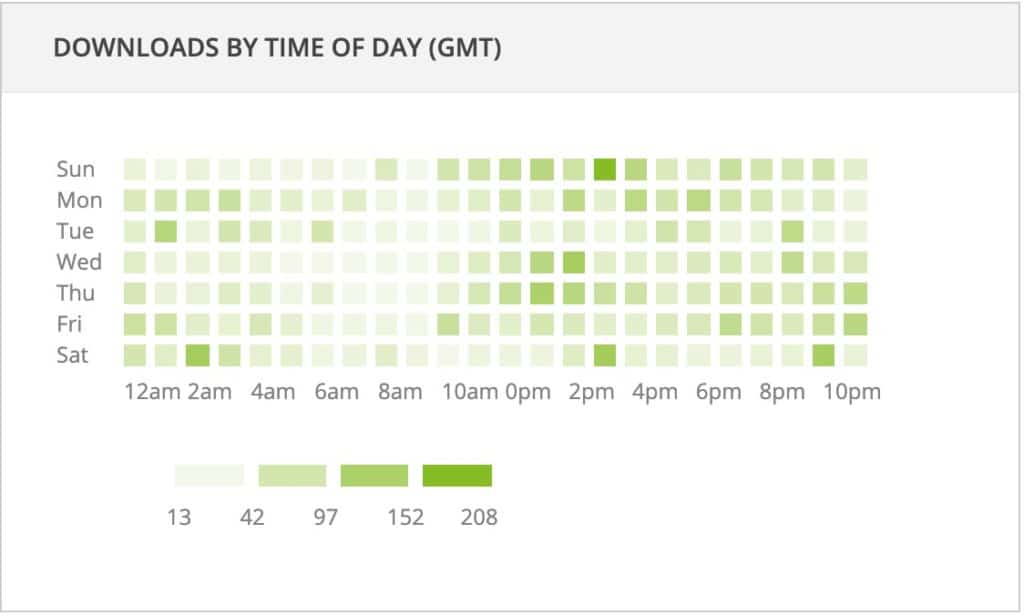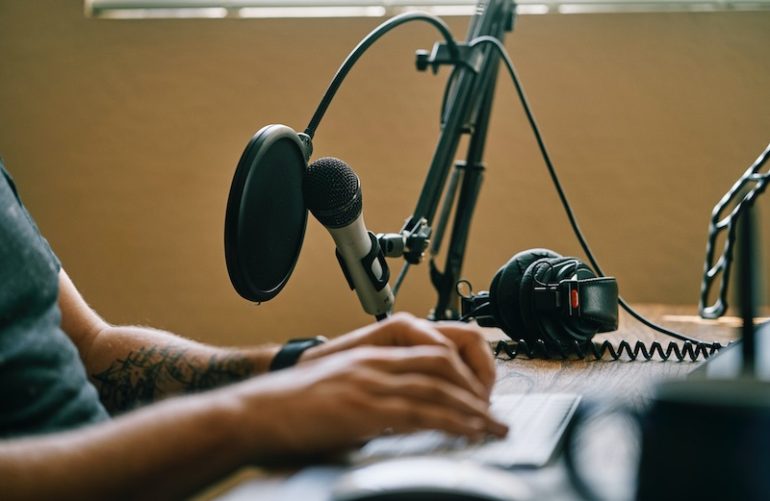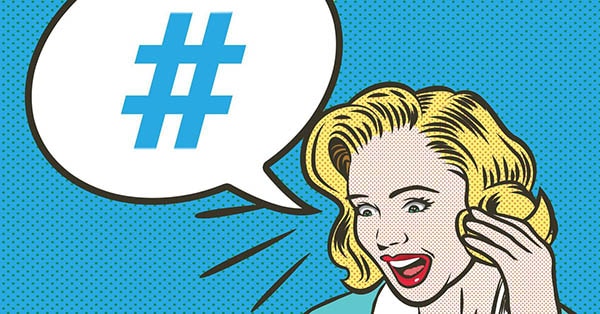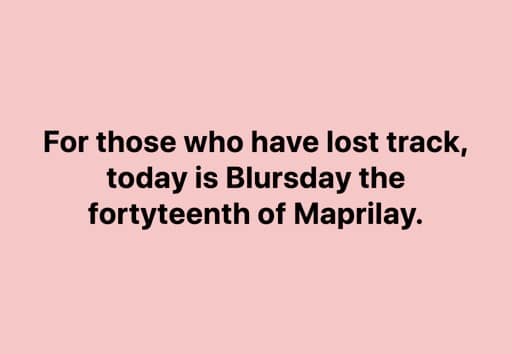Coronavirus might seem like the perfect time to launch a podcast.
After all, unlike other forms of content, podcasting requires minimum equipment. You can even record remotely with others from the safety of your own homes. As reported by the LA Times, Spotify reported 150,000 podcast uploads in March, 69% more than in February (the largest monthly increase in Spotify history!).
At the same time, the podcast newsletter Hot Pod reported on April 14th, 2020 that podcast listenership had flattened out, largely in part because commuting, the time during which most people listen to podcasts, has been removed from the equation (as has working out and many outdoor chores, which are also popular times to listen to podcasts). Yet flattening out doesn’t mean podcasting has collapsed; it only means that podcasting has adjusted to the new normal. There’s still plenty of people who listen to podcasts in the background during other activities, as they fall asleep, or who treat the medium as appointment listening.
So, now remains a great time to jump into the podcasting arena. It’s an accessible medium and an easy way to create content (far easier than digital video production). But you don’t want to jump in without following best practices because you only have an eight-week window to make it into the iTunes New and Newsworthy section, a portion of the digital library that will get countless peepers peeping at your creation. With that in mind, here are the steps to take to make sure your digital debut is made most effectively.
Podcasting is Personal
To begin with, podcasting is an incredibly personal medium. It’s most often consumed with earbuds that drown out the sound around the consumer. In fact, many consider it a benefit to be seen wearing earbuds because it makes them appear unapproachable to strangers, which is particularly appealing to those who consume their podcasts on public transportation.
Promotion
How you promote your show is very important because you’re not just cultivating a fan base; you’re cultivating an intimate relationship. Literally, your audience is likely to be hearing your voice and your voice alone when they consume your content.
You want to put your best foot forward with the title of your show, the text that describes it, and any associated images. Effectively communicating what your audience gets out of your podcast is indispensable.
Episode Sign Off and Greeting
Similarly, indispensable is your sign off and greeting. Any episode of your show can be your listener’s first episode, and you want to establish a rapport right away. You also want to establish familiarity so that your listeners begin and end your podcast with a sense of comfort. Other considerations include a theme song, regular segments, and teasers for future episodes (and don’t forget to mention your archive either!).
Your Website
Your listeners may find your podcast using your website, so you want a clear, concise, and optimized design that gets to the point quickly. You also want it to be easy to find how to subscribe and listen to your content. Keep in mind, however, that a lot of listeners will discover your content by browsing iTunes, by word of mouth, or, if you’re lucky, a listicle of must listen to podcasts. So, again, consistency is key. You want your listeners to know right away what all the hub-bub about your podcast is about!
Have a Marketing Plan to Promote Your Podcast
Your podcast may be improvised, but your marketing shouldn’t be. You want to have an idea of who your audience is, how best to reach them, and ways that popular distributors like Apple, Spotify, and Stitcher can help (they provide lots of useful analytics). Also, having a road map, no matter how ambiguous, is a good idea for every episode of your podcast.
Your plan may be granular because your program is dedicated to explaining particular concepts, or it may be loose because it’s you and your friends riffing on bad movies. Either way, you should know how each of your shows is going to go because regularity is key.
Comfort is part of what compels your audience to return to you time and time again, and surprise and change generally evoke discomfort. You want your subscribers to get used to and anticipate the various constitutive elements of your show so that it provides them with a sense of ease and enjoyment.
A reliable relationship with the hosts of their shows is why many listeners tune in to episode after episode.
Who listens to podcasts
While it’s useful to know who your specific listeners will be, it’s also useful to know what podcast listeners are like in general since they’re the pool that you’ll be casting your net into. This infographic from Musicoomph provides invaluable insight.

Interact and Engage Listeners
You should have a way that you directly interact with your listeners. This may be in the form of:
- reading emails you receive on your show
- interacting with fans on social media
- creating a subreddit for your podcast
- having a web forum
- creating exclusive content on your website
- live appearances
- encouraging fans to meet in person just to hang out
- listening parties
- conventions
- Merchandise
- etc.
You want to build on the personal relationship that you have with your audience, as well as the fact that your audience also shares that relationship with other listeners, which can create strong interpersonal bonds. It’s not uncommon for podcasts to be the catalysts for legitimate friendships between fans.
Branding Your Podcast
Branding is also important. You need to be able to quickly and consistently communicate what your show is about not just using your cover art, but on social media, your website, and, most importantly, on the digital platform where your podcast will be found.
Don’t forget, no matter how good your logo looks in full screen, it’s going to be seen as a thumbnail. So you want a relevant, memorable image that uses a large, easy to read font.
When you describe your show, get to the point quickly:
- Why should people listen?
- What will your audience get out of spending time with you?
Title your episodes wisely, leading with the most important information first, whether it be a big-name guest, the topic of discussion, exclusive interviews, or the bad movie you’ll be making fun of.
But before you start branding you need to start planning.
Plan Each Episode – Create a Show Brief
Prior to recording even your first episode, you should already know your:
- Podcast Name
- Host
- Host Bio
- Description
- Context
- Business Objective
- Target Audience
- Duration and Frequency
- Launch Date
Some of these concepts require elucidation. Context is your reason for making your show in the first place. You may have a niche topic you explore every episode or you may simply be a group of friends who have a great rapport. Whatever it is, you need to know what it is before you get started.
Your business objectives take into consideration how your content fits into a larger set of strategic goals. This consideration, for many podcasters, is often taken for granted since, again, many podcasts are just started by friends who want to record themselves having a good time.
But before you start recording your get-togethers, no matter how charming they may be, don’t do yourself a disservice by not making a business plan. When you put that plan together, keep your target audience in mind. Ask yourself what sort of people will be consuming your content.
Being clear about your goals is important for discovering your audience, for attracting advertisers, linking up with a larger podcasting network, as well as for generating media attention. Being clear and concise will make it easier for everyone, yourself included, to decide whether or not your podcast is worth the investment. It’s also important to think about how long each episode should be, and how often and when you want it to come out.
Optimize Your Podcast Episode Metadata
Your show’s metadata contains all the information about your show–title, author name, description– that everyone sees. Well constructed metadata will make it easier for potential listeners to find your show and to expand your audience since metadata is what determines how your show appears in user searches. Poor-metadata will adversely affect whether or not your show gets approved, and the accessibility of new shows.
Avoid the following common metadata pitfalls:
- Leaving placeholder text unfilled. You don’t want it to say, “Name of show,” anywhere!
- Don’t verbatim repeat the name of the podcast or its creators in the description. For example, “Shoes You Can Wear by Naomi Alvarez” shouldn’t be in your description.
- Avoid irrelevant content or spam. A show title like, “Shoes You Can Wear | Flats | Heels | Sneaks” or addendums to creator names like, “Naomi Alvarez, fashionista and influencer” are a no-no.
- Don’t include episode numbers in show titles, like, “Shoes You Can Wear Ep. 699”
Use Podcast Tools and Analytics
According to PodBean, here’s a breakdown of popular podcast download days and times in the GMT time zone for 2019.

Whatever platform you use to distribute your podcast, and it may be more than one, will provide you with analytics. By studying this data you can see when your podcast is downloaded, sometimes with great specificity, including the time of day. There’s no one size fits all chart since there’s no one size that fits all audience. So, study your data and make an informed decision as to when to release new episodes.
According to PodBean the top five time slots in 2019 were as follows:
- Wed 7 pm EST
- Mon 8 am EST
- Mon 9 am EST
- Tue 9 am EST
- Mon 10 am EST
Although, these times have likely changed given the era of Coronavirus. Luckily, you’ll have access to more current information courtesy of your publishing platform.
Podcasting Tools for the Win
Many platforms provide tools to make getting your podcast off the ground easier. Apple, for example, provides the following:
- Link Builder
- Banner Builder
- Widget Builder
- iAd Workbench (a tool for building advertising campaigns)
There are also platforms that make it easier for you to both make and monetize your podcast:
- Anchor: Create, distribute, and monetize your podcast from any device. Best of all: it’s free! Anchor also recently launched Record With Friends 2.0 to make it easier to record remotely.
- Midroll: Midroll brings advertisers to podcasters. Marketers browse Midroll affiliated programs, choose who they want to work with, and pay hosts to be a part of their campaigns by having hosts read the copy themselves in their own voice and style.
- Patreon: Patreon allows your audience to directly support your podcast monetarily in exchange for exclusive content.
- Squarespace: Squarespace makes it easy to make a website, which is good news for podcasters who want to dedicate their energy to recording their shows. Squarespace is also a popular sponsor of podcasts. They know their audience well!
Bottom Line on Podcasting
Even though podcasting has flattened during quarantine, that doesn’t mean the medium isn’t doing well.
Sure, Digiday may have reported that podcast downloads went down 10% between March 25th, 2020, and February 26th, 2020. But that same report also noted that plenty of podcasts have experienced an increase in listenership. And the medium’s ease of digestion has meant advertising continues to be healthy.
Podcasts are resilient. Because they’re easy to make they’re also easy to change, so they can adjust with the demands of the market and the world at large. “Be flexible in your work and keep the focus on the needs of your audience,” advised PR Nation co-host Robert Johnson to readers of PR News, adding, “This is a good time to practice turning on a dime. Pros who can do that always fare better than their peers.” This may take the form of releasing Coronavirus and quarantine specific episodes, or, in the case of We Hate Movies, building on the dedicated following you already have by releasing even more content.
Remember, podcasting is an incredibly personal medium and your listenership wants to know how you’re handling the Coronavirus. You may get involved because it fits into a larger business plan, but you may also jump into podcasting because you’re a journalist with a unique story to tell or because you and your friends are very entertaining when you talk. Whatever your motivation, there’s no medium that rewards following your bliss as much as podcasting. Just remember to give your audience plenty of what they came for in the first place: you.







